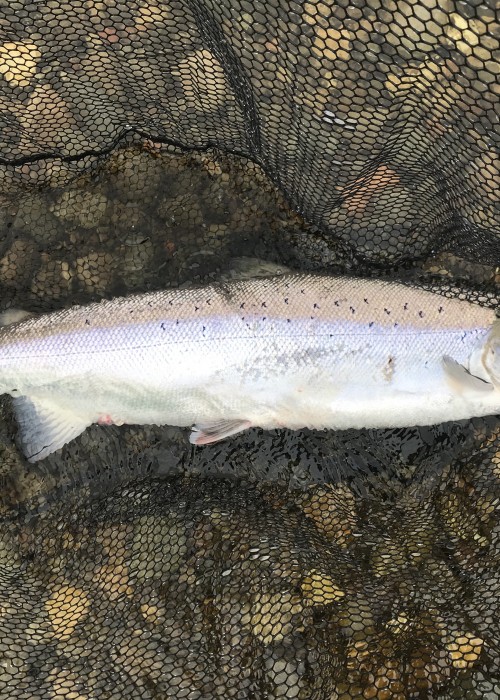
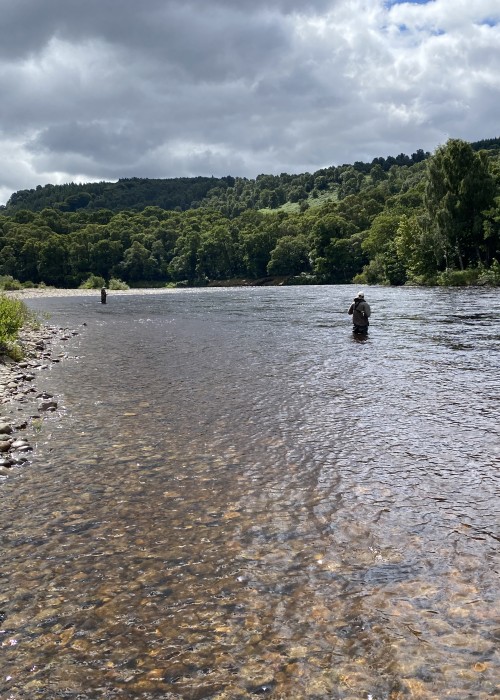
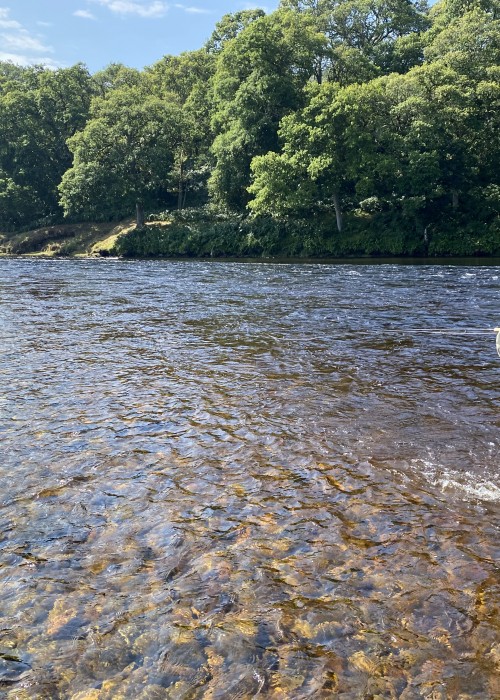
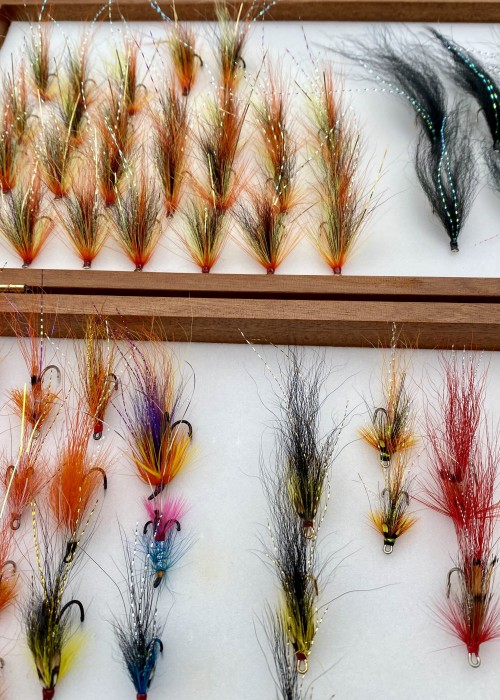
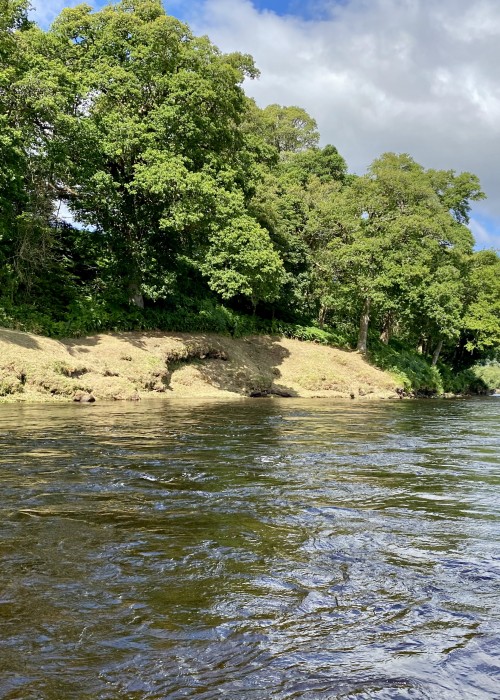
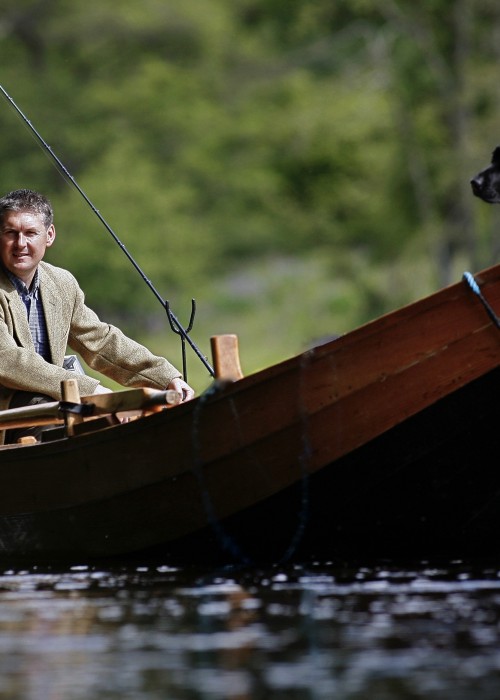
Professional career based salmon fishing advice on how to make sure you catch many more salmon than most salmon fishers achieve.
In Scottish salmon fishing instruction the main focus tends mainly to be only about casting a fly rod via the traditional Spey cast and how elegant and how much distance can be achieved. This of course doesn't matter to a salmon as what goes on above the waterline is of zero significance for a successful outcome to the fishing day as long as you can 'reasonably' fully extend the line you're working with. Most salmon are hooked at a range of 15 to 25 yards which is the range area where your fly is under full swim control. With this in mind a distance cast is 35+ yards is less important for fly control reasons than most fishers would understand as a long range salmon fly is uncontrollable by the vast majority of salmon fishers therefore the fly is not effectively fishing.
One of the main things that really matters for making sure you have the best chance of catching salmon is having good salmon fly swing spacings between each cast (and remember that even a bad cast will be straightened out quickly by the current). How your boots are perforning on the gravel, rocks or sand are of far more significance when it comes to catching salmon than a nicely presented aerial distance Spey cast. The spacing measure I've personally found to be a winning formula is 3ft between each swing of the fly so that is the exact distance I'll move between each fly delivery which also ensures huge water coverage over the full course of the salmon fishing day. This 3ft distance is usually not too far away from the end of your fly rod's cork handle to the rod's first butt ring. Therefore if you want real precision movement between each cast pick a riverbed stone (or feature) directly underneath your rod's butt ring (when the fly fishes out and the rod is pointing downstream at the end of the cast) and move to it between each cast.
The end result of adopting subsurface salmon fly mentality paired with effective fly swing spacings is the inevitable take from a salmon. Once you've hooked your salmon then it's important that you know how to play the salmon correctly and safely. Never play a salmon from an upstream position (when possible) as playing a salmon that's downstream will prolong the fight as you'll have little control of the fish and technically you'll also be adding the weight of the river to the salmon's advantage. Play your salmon from a 'side on' position (even if you've got to walk downstream) as it's that side strain that will imbalance the fish and force it to fight therefore eventually tiring it. Exerting reasonable salmon rod bend power on the fish through the fight is best as if you lay into a fish it will normally reciprocate and when a salmon does that early in proceedings it can easily end in the loss of the fish. It is important to look for a calmer, deeper snag free area of the pool to steer the fish into to make the landing stage easy with a favourable outcome. When a fish is ready to be landed it should only be a simple case of drawing it in one steady movement over a pre-sunk landing net.
The second most important factor is adopting a sub-surface thought process as focussing and knowing how your salmon fly is performing in the stream (regarding its depth & speed) is of major significance for success in this business. In cold water you really want a slower fished fly and in warm water a faster fished fly often works best. Depth of fly really depends on water temperature and I personally go deeper with my fly swim presentation when the river is warmer and salmon are much more likely to be holding deep. To learn these delicate salmon fishing skills and many more book a Scottish salmon guide and give yourself a new set of salmon fishing skill thought processes therefore giving you a far better chance of succes in this amazing traditional Scottish rural pursuit.